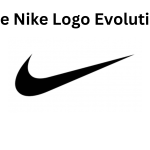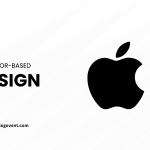The golden rule for logos is that there are no rules. That may sound like it contradicts itself, but its true! Some logos (like Nike’s swoosh or Coca-Cola’s script) have become so popular and memorable that they’re practically cultural icons. Other companies’ logos are less successful—they fade into obscurity or don’t even last long enough to be remembered at all. So, what makes a good logo? How can you tell whether your design skills stack up against the pros?
In the following blog post, we will be discussing the golden rule of creating a logo, along with some extra bits to help your logo stand apart from the competition.
The Golden Rule
The golden rule for logos is to keep them simple, memorable, and distinctive. A good logo should be easy to recognize, even at a small size, and it should be able to convey the brand’s identity and values in a clear and effective way. Some additional guidelines to consider when designing a logo include the following:
- Keep it simple: Avoid complex designs or too many details that can be difficult to reproduce in different sizes or formats.
- Choose the right colors: Colors should be chosen carefully, as they can have a significant impact on how people perceive a brand.
- Make it timeless: A logo should be designed to stand the test of time and not look outdated in a few years.
- Consider versatility: A good logo should be able to work well in a variety of formats, including digital and print media.
- Make it unique: A logo should be distinct and not easily confused with other brands or logos.
- Make it relevant: A logo should be designed to reflect the nature and values of the brand it represents.
Thinking about hiring a freelance logo designer? Learn how much they charge.
Looking for an Affordable
Logo Design Services
Get in touch with our 24/7 available representatives now!
Chat With us to avail 30% OFF
A Lesson in Tolerance
Tolerance is a lesson in acceptance. The more you tolerate, the more you can learn from others. The golden rule of logos is to have a logo that’s not only aesthetically pleasing but also shows your company’s values and mission statement.
When it comes to creating logos, there are some key elements that all successful brands have in common: consistency, simplicity, and relevance. These things help keep your brand identity intact while maintaining an element of surprise for your audience so they’ll always want something new from you!
What Makes a Logo Good?
The only rule to make a good logo design is simple: make your logo memorable, unique, and flexible.
A good logo should be recognizable as a brand’s identity at first glance. The best logos are those that can be quickly identified by consumers who have never seen them before (think Nike swoosh or McDonald’s golden arches). If it takes too long for someone to figure out what your company does or where you’re from–or even what kind of business you run–then it might be time for an update!
Logos should also be able to stand alone as symbols of brands without any text attached, otherwise known as “wordless logos.” These types of visual representations allow customers to identify with companies more easily than if they were simply reading words on a page or screen every time they wanted something from that particular company (such as when shopping online).
In addition, having both written text AND visual elements allows companies greater flexibility when trying out new marketing strategies down the road since they won’t necessarily need new materials every time something changes internally within their organization – instead, they just update existing ones with minor tweaks here and there whenever necessary.”
It’s important to know what makes a good logo.
A logo is the face of your brand. It’s what people remember about you and how they identify with you. It also serves as an important symbol for the company, so it needs to be memorable, unique, and simple enough that anyone can understand it at a glance.
A good logo has a memorable color scheme that can be used across all mediums (from print ads to social media posts) without losing its meaning or impact on viewers’ minds. For example, The Apple logo uses just two colors–red and white–but those two hues still evoke feelings of sophistication and innovation in consumers’ minds when they see them today, just as much as they did when Steve Jobs first launched his company back in 1976!
Learn about the essentials of logos, like the copyright.
Conclusion
As we’ve seen, there are many different types of logos. Some are simple and elegant, while others are complex and ornate. But no matter what type of design style you choose for your company’s logo, it’s important to know what makes a good logo. This means knowing who your audience is and how they will perceive the image — whether it’s an icon or text-based symbol that conveys your brand message clearly or not so much at all!





